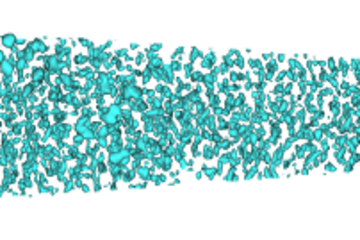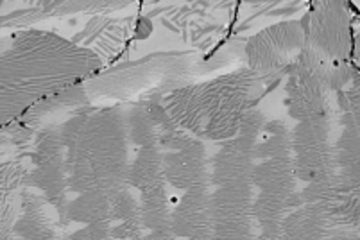All genres
41.
Journal Article
Ab initio study of thermodynamic, structural, and elastic properties of Mg-substituted crystalline calcite. Acta Biomaterialia 6 (12), pp. 4506 - 4512 (2010)
42.
Journal Article
Ab Initio Guided Design of bcc Ternary Mg–Li–X (X=Ca,Al,Si,Zn,Cu) Alloys for Ultra-Lightweight Applications. Advanced Engineering Materials 12 (7), pp. 572 - 576 (2010)
43.
Journal Article
L21-ordered Fe–Al–Ti alloys. Intermetallics 18 (7), pp. 1360 - 1364 (2010)
44.
Journal Article
Combined ab initio and experimental study of structural and elastic properties of Fe3Al-based ternaries. Intermetallics 18, pp. 1310 - 1315 (2010)
45.
Journal Article
Ab initio study of the anomalous volume-composition dependence. Intermetallics 18, pp. 1316 - 1321 (2010)
46.
Journal Article
Generation and performance of special quasirandom structures for studying the elastic properties of random alloys: Application to Al–Ti. Physical Review B 81 (9), pp. 094203-1 - 094203-7 (2010)
47.
Journal Article
Revealing the Design Principles of High-Performance Biological Composites Using Ab initio and Multiscale Simulations: The Example of Lobster Cuticle. Advanced Materials 22 (4), pp. 519 - 526 (2010)
48.
Journal Article
Interplay between long-range elastic and short-range chemical interactions in Fe–C martensite formation. Physical Review B 79 (22), pp. 224112-1 - 224112-5 (2009)
49.
Journal Article
Using ab initio calculations in designing bcc Mg-Li alloys for ultra light-weight applications. Acta Materialia 57 (1), pp. 69 - 76 (2009)
50.
Journal Article
Atomistic calculations on interfaces: Bridging the length and time scales. The European Physics Journal Special Topics 177, pp. 41 - 57 (2009)
51.
Journal Article
Multiscale simulation of polycrystal mechanics of textured β-Ti alloys using ab initio and crystal-based finite element methods. Physica Status Solidi B 245 (12), pp. 2642 - 2648 (2008)
52.
Journal Article
Error-propagation in multiscale approaches to the elasticity of polycrystals. Physica Status Solidi (B) 245, pp. 2636 - 2641 (2008)
53.
Journal Article
Ab initio study of the bcc-hcp transformation in iron. Physical Review B 77, 174117, p. 174117 (2008)
54.
Journal Article
A comparison of polycrystalline elastic constants computed by analytic homogenization schemes and FEM. Physica Status Solidi B 245, pp. 2630 - 2635 (2008)
55.
Journal Article
The role of ab initio electronic structure calculations in contemporary materials science - part 2. Journal of Functional Materials 1 (11), pp. 408 - 418 (2007)
56.
Journal Article
The role of ab initio electronic structure calculations in contemporary materials science - part 1. Journal of Functional Materials 1 (10), pp. 363 - 367 (2007)
57.
Journal Article
Theory-guided bottom-up design of β-titanium alloys as biomaterials based on first principles calculations: Theory and experiments. Acta Materialia 55 (13), pp. 4475 - 4487 (2007)
58.
Book Chapter
Multi‐scale Modelling of a Biological Material: The Arthropod Exoskeleton. In: Materials Design Inspired by Nature: Function Through Inner Architecture (CHAPTER 9), pp. 197 - 218 (Eds. Fratzl, P.; Dunlop, J.W.C.; Weinkamer, R.) (2013)
59.
Book Chapter
Ab Initio Guided Design of Materials. In: Structural Materials and Processes in Transportation, pp. 481 - 495 (Eds. Lehmhus, D.; Busse, M.; Herrmann, A. S.; Kayvantash, K.). Wiley-VCH Verlag GmbH & Co. KGaA, Weinheim, Germany (2013)
60.
Book Chapter
Hierarchical modeling of biological nanocomposites. In: Mechanics of Nanomaterials and Nanotechnology, pp. 199 - 224 (Eds. Kavardzhikov, V.; Parashkevova, L.; Baltov, A.). Institute of Mechanics - BAS, Sofia, Sofia, Bulgaria (2012)











